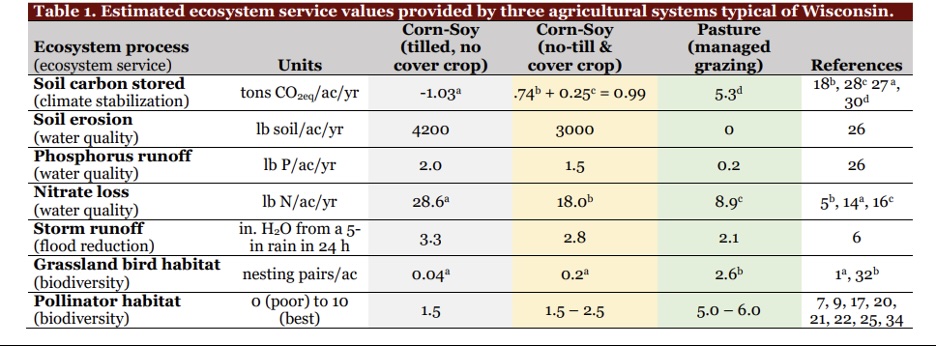All Grass
This farm is an all-grass dairy farm. Most grass-fed dairy brands have a higher percent of forages in the cow’s diet than the 33% required by organic. This farm is all grass, meaning it does not feed grain, instead uses supplements and hay that was harvested in the summer to feed the cows in the winter.

Located near the Baraboo River in Wisconsin, this farm is within a unique ecosystem comprising one of the most ancient rock outcrops in North America. Much of the region includes rolling hills and woods, with durable rock called Baraboo quartzite underneath oak, maple, and basswood trees. Managed grazing is a farming system that complements this ecosystem, with its emphasis on cows grazing on perennial pastures rather than row cropping.
Originally developed in New Zealand, managed grazing is an approach to dairy farming that focuses on keeping cows on pasture. However, this isn’t your grandfather’s grazing. There is a lot of innovation that has come with managed grazing. Cows are moved to new paddocks with fresh grass as often as every 12 hours. By doing this, the cows are always eating fresh grass with peak nutritional value. They aren’t in the paddock long enough for the grass to get trampled. They spread their own manure, fertilizing the paddocks as they graze. By the time they make it through a series of paddocks, the grass has recovered. Cows can do this year-round in New Zealand. In Wisconsin, managed grazing operations have cows on pasture but also use barns where they can stay warm in the winter and cool in the summer.
The process of managed grazing cattle on perennial pasture is a powerful way to restore depleted soils, keep soils intact, protect soil from runoff, and provide habitat for nesting birds and pollinators.
The Natural Resources Conservation Service (NRCS) includes managed grazing as an approved practice in its conservation and farming programs. According to research done at the U of WI, it also produces the highest benefits of all regenerative farming practices for soil carbon sequestration, reduced soil erosion, reduced phosphorous runoff, reduced nitrate loss, reduced stormwater runoff, increased grassland bird populations, and increased pollinator habitat.

To learn more about the Baraboo Hills region of Wisconsin, see:
For more information on the ecological benefits of managed dairy grazing, see:
University of Wisconsin, Grasslands 2.0, “Well managed perennial pasture: Setting the Gold Standard for Ecosystem Services, FINAL-Ecosystem Services Fact Sheet, 2022.
For a Scientific Review of Grass Based Dairy Systems and Benefits, see:
Moscovici Joubran A, Pierce KM, Garvey N, Shalloo L, O’Callaghan TF. Invited review: A 2020 perspective on pasture-based dairy systems and products. J Dairy Sci. 2021 Jul;104(7):7364-7382. doi: 10.3168/jds.2020-19776. Epub 2021 Apr 15. PMID: 33865573.
A note about our photos: We are excited to use photos to connect you to the farms that supply milk for your Organic Squeaks so you can learn about the wide range of eco-active practices they use. Unless noted otherwise, these photos were taken on this farm by a photographer who is also one of our farmers. We respect the culture and privacy preferences of our farm partners, which is why you won’t always see people in our photos.

